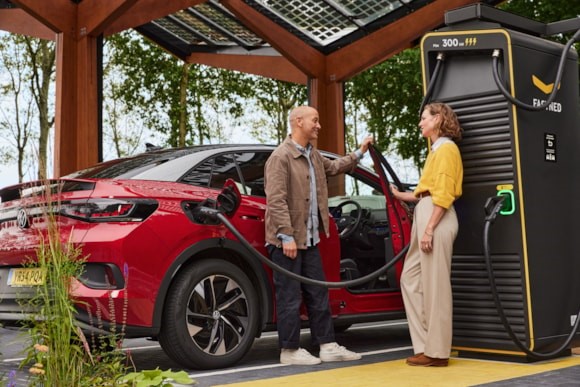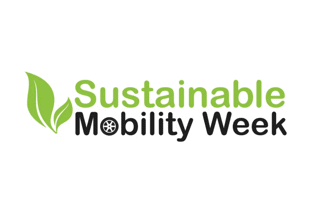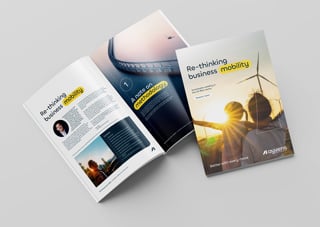Much of the debate around sustainable mobility, and in particular EV adoption, has focused on the environmental benefits and cost savings, but there is another dimension which is often lost among the ongoing culture war between early electric adopters and committed petrolheads.
Say it quietly, but EVs are simply better to drive than their ICE equivalents. Dyed-in-the-wool driving enthusiasts are unlikely to agree, but for most company car drivers clocking up 20,000 miles a year or more, an EV is almost certainly a more comfortable way of getting from A to B.
It took decades of research and development for premium brands like Jaguar or Lexus to create the kind of refinement associated with a silky smooth V12 or super-smart hybrid, but the typical EV offers similar levels of quiet comfort and seamless progress without the pricetag.
What this means in practice is that EV drivers tend to arrive at their destination in better shape after driving halfway across the country. And if that journey involves a 25-minute break for a quick top-up charge – is that necessarily a bad thing when it comes to driver wellbeing and safety?
The van delivery stress test
LCV manufacturer Fiat Professional monitored the stress levels of drivers following a 20-mile delivery route in a conventional diesel van and then repeating the route in an electric van. Overseen by Dr Duncan Williams – an expert on the impact of sound and other factors on stress levels – the findings suggested lower noise levels inside the electric van were important factors in drivers feeling less stressed.
The study used medical-grade monitoring devices similar to smart watches that measured sweat level, heart rate, body temperature and blood pressure, which were all measurably lower in the electric van and individual driver feedback via qualitative questionnaires supported these findings.
Dr Williams also worked with three London cabbies as part of the development of LEVC’s hybrid TX taxis – all of whom were so impressed with the new electric black cabs that they purchased their own.
Overcoming driver resistance
Given the amount of negative news coverage in the mainstream press about electric vehicles, it’s not surprising that many drivers remain sceptical about EVs. This resistance tends to take three forms: a knee-jerk anti-EV prejudice based upon often inaccurate reporting in some quarters of the mainstream media or on social media; genuine concerns that an EV may adversely impact their ability to do their job properly; genuine concerns about the safety of EVs.
Fleet managers may need to tackle these concerns head-on, and often the best way of doing this is by getting drivers behind the wheel of an EV.
Safety
A surprising proportion of the population believes EVs are more likely to burst into flames than an ICE vehicle, but the reverse is true.
EVs must meet the same fire safety standards as ICE vehicles and according to the AA, the incidence of vehicle fires involving EVs is only a tiny fraction of those involving ICE vehicles.
Estimates by the Phosphorous, Inorganic & Nitrogen Flame Retardants Association reported 55 fires per billion miles travelled in ICE vehicles and five fires per billion for EVs. A report from AutoinsuranceEX said EVs exhibited 61 times fewer fires per 100,000 sales than ICE vehicles.
Range anxiety
Despite a rapidly expanding charging network and improved ranges, many people still worry about the risk of running out of charge and the prospect of being stranded miles from help.
The reality is that you need to completely ignore a series of increasingly insistent warnings to run out of charge completely and most EVs will recommend diverting to the nearest charge point, which they will also find for you, well before the battery is completely flat.
Again, the AA says drained batteries account for only a tiny proportion of breakdown callouts and many recovery vehicles are now equipped with the rapid charger that will quickly give you enough of a charge to get you to the next charging station.
Operational capability
High-mileage job need drivers may have legitimate concerns that switching to an EV will compromise their ability to complete their delivery routes or make all their business appointments on time, but in practice, this is rarely the case.
Some roles may need redesigning around the effective ranges of EVs, so that statutory rest breaks are taken while the vehicle is recharging, but as long as it’s made clear that drivers aren’t expected to work extended hours because of range limitations, the transition to EVs is usually a smooth one.
Aaron Jarvis, Associate Vice President, Sales and Business Development, UK & Ireland at Geotab said: “For a lot of our customers, essential need drivers typically work eight- to twelve-hour shifts in a van or in a car and overwhelmingly we've found driver satisfaction is better in an electric vehicle. They have better technology, they’re warmer, more comfortable and quieter.
“And what a lot of our customers have found is that drivers are more likely to stop for a coffee on a regular basis and just grab a bit of downtime while they top up the battery – and they really seem to enjoy this aspect – particularly those on regular routes who are able to stop and have a chat with their mates.”
Colin Hall, Strategic Sales Manager, Workplace and Fleet at Mer UK said: “While drivers may need to adapt some driving habits to get the most out of their EVs, they will be more comfortable and less tired from the vibration and noise of an ICE. A small adjustment in driving behaviour soon becomes second nature.
“When it comes to the longer trips I undertake for work, stopping mid-journey to charge really isn’t an inconvenience. In fact, I find it a great opportunity to recharge my own batteries. Taking fifteen or twenty minutes to take a break while my EV tops up on a 150KW charger has become part of my general travel process now.
“I factor the need to charge into my journey schedule and use that time to get a coffee or check emails. It takes a remarkably short time to form new habits, and these stops focus your mind on looking after your own wellbeing as well as your vehicle’s needs.”
Adapting driving styles to maximise efficiency and range
Within minutes of collecting a new car, most new EV drivers will wait until they get to a straight and floor it. The instant torque and seamless acceleration are exhilarating, but once they’ve done this a few times, the novelty soon wears off – especially when they see what it does to the range.
While the straight-line performance of most EVs is impressive, to get the best out of them requires a more delicate deployment of all that power and torque. This is where a programme of dedicated EV driver training could pay for itself in a matter of months.
Re-educating drivers to drive more smoothly and with greater anticipation will not only maximise range and efficiency, but it will also further leverage the in-built advantages of EVs over ICE vehicles when it comes to wear and tear.
Simple hacks such as using heated seats rather than air con in winter and understanding how energy recapture during deceleration and braking extends range reduces range anxiety and gives drivers a greater sense of agency.
As any driver training professional will testify, introducing an element of ‘game-ification’ to improve safety and drive efficiencies is an excellent way to engage drivers with the new skills they have acquired through a programme of driver training.
Many modern EVs have driver training modules embedded within their infotainment system menus and once engaged, these can become surprisingly addictive.
The telemetry integrated in EVs produces an absolute treasure trove of data for fleet managers to mine for KPIs, and publishing monthly energy consumption league tables often leads to significant improvements in economy as drivers compete for the coveted award for greenest driver each month.
Redesigning working patterns to accommodate charging
The latest generation of real-time route-planning software and apps offer both fleet managers and drivers the opportunity to negotiate the increasingly congested UK roads network in a smarter way.
This, combined with a more flexible approach to working hours, can empower drivers to avoid congestion and snarl-ups and make more productive use of their time. It may suit some employees to make an earlier start and stop for breakfast coffee and pastries while they check emails – avoiding the rush hour queues and getting to their destination in better shape with a full battery for the return journey.
For delivery and logistics fleets, a more comprehensive overview of routes and working rosters may be required, but the good news is that there is an entire ecosystem of consultants and smart software systems with extensive operational experience who can do much of the heavy lifting.
Vehicle tracking and route optimisation
Not so very long ago, many fleets encountered significant resistance from drivers and trade unions over the privacy aspects of vehicle tracking systems, but today – particularly in the delivery and logistics sector – these systems are widely regarded as pivotal to driver safety and part of an employer’s duty of care to employees.
Within this context, the extra layer of complexity added into the mix by EVs’ charging requirements is simply another challenge for the route planning software to factor into the mix.
This wider adoption of telematics and tracking is crossing over into the essential job need sector as well, where company car drivers are increasingly accepting of in-car tracking.
But in the absence of centrally planned and optimised routes, these drivers need to be aware of the additional planning required to complete longer journeys that involve charging breaks and may benefit from some training to make the most of more complex navigation apps such as Iternio’s A Better Route Planner.
Not just greener…better
Most drivers acclimatise to the EV driving experience within a few weeks – less for drivers who are accustomed to an automatic – and after a few months, the anecdotal evidence is that few want to go back to an ICE car or van.
There are exceptions – for example drivers who need to tow large and/or heavy trailers will see the range of the typical EV almost halved when they hitch up, making it difficult to meet operational demands. But for most drivers, the electric experience is an overwhelmingly positive on.
Peter Golding, managing director, FleetCheck, said: “This is anecdotal, but it seems to be the case that with their reduced noise and vibration, many fleet drivers find an EV less stressful and wearing than an ICE equivalent, particularly over a longer trip.
“Also, the need to stop for charging on those kinds of journeys creates a natural break, rather than the temptation to keep on ploughing towards your destination.
“All of this adds up to a less onerous driving experience and one where employees should hopefully be able to stay more attentive and relaxed for longer.”
Colin Hall at Mer UK concludes: “Driving an EV is different from driving ICE vehicles, but if the transition was the other way round, I don’t think anyone would want to give up the cleanliness and convenience of an EV experience for a petrol or diesel vehicle.
- Author of this article Mark Sutcliffe was an early adopter of electric vehicles back in 2016 and has just taken delivery of his fourth EV.





















Login to comment
Comments
No comments have been made yet.